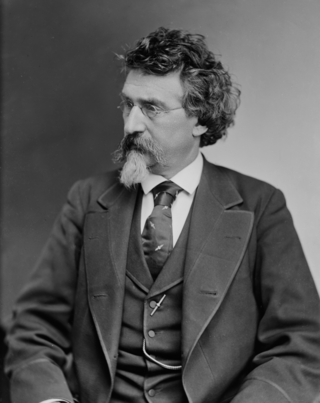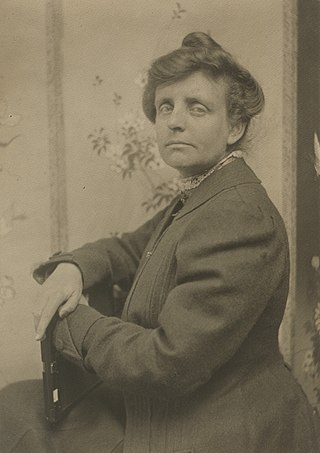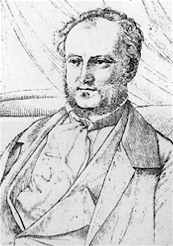
Mathew B. Brady was an American photographer. Known as one of the earliest and most famous photographers in American history, he is best known for his scenes of the Civil War. He studied under inventor Samuel Morse, who pioneered the daguerreotype technique in America. Brady opened his own studio in New York City in 1844, and went on to photograph U.S. presidents John Quincy Adams, Abraham Lincoln, Millard Fillmore, and Martin Van Buren, and other public figures.

The American Civil War was the most widely covered conflict of the 19th century. The images would provide posterity with a comprehensive visual record of the war and its leading figures, and make a powerful impression on the populace. Something not generally known by the public is the fact that roughly 70% of the war's documentary photography was captured by the twin lenses of a stereo camera. The American Civil War was the first war in history whose intimate reality would be brought home to the public, not only in newspaper depictions, album cards and cartes-de-visite, but in a popular new 3D format called a "stereograph," "stereocard" or "stereoview." Millions of these cards were produced and purchased by a public eager to experience the nature of warfare in a whole new way.

Alexander Gardner was a Scottish photographer who immigrated to the United States in 1856, where he began to work full-time in that profession. He is best known for his photographs of the American Civil War, U.S. President Abraham Lincoln, and of the conspirators and the execution of the participants in the Lincoln assassination plot.

Frances Benjamin Johnston was an American photographer and photojournalist whose career lasted for almost half a century. She is most known for her portraits, images of southern architecture, and various photographic series featuring African Americans and Native Americans at the turn of the twentieth century.
Volkmar Kurt Wentzel was a German American photographer and cinematographer. He worked for nearly 50 years for the National Geographic Society as a darkroom technician and photographer, and his professional and personal work was highly acclaimed. He was one of the first people to take photographs of then-little known country of Nepal, and was noted for documenting the final years of many of the traditional tribal kingdoms of Africa.

George Grantham Bain was a New York City photographer. He was known as "the father of foreign photographic news".

Levin Corbin Handy was an American photographer who worked during the 19th and early 20th century.

Zaida Ben-Yusuf was an American portrait photographer based in New York. She was known for her artistic portraits of wealthy, fashionable, and famous Americans during the turn of the 19th–20th century.

John Plumbe Jr. was a Welsh-born American entrepreneurial photographer, gallerist, publisher, and an early advocate of an American transcontinental railroad in the mid-19th century. He established a franchise of photography studios in the 1840s in the U.S., with additional branches in Paris and Liverpool. He created a lithographic process for reproducing photographic images, called the "plumbeotype."

Carol McKinney Highsmith is an American photographer, author, and publisher who has photographed in all the states of the United States as well as the District of Columbia and Puerto Rico. She photographs the entire American vista in all fifty U.S. states as a record of the early 21st century.

James Edward Westcott was an American photographer who was noted for his work with the United States government in Oak Ridge, Tennessee, during the Manhattan Project and the Cold War.
Amory Nelson Hardy or A.N. Hardy (1835–1911) was a photographer in Boston, Massachusetts, in the 19th century. Portrait subjects included US president Chester A. Arthur, clergyman Henry Ward Beecher, politician James G. Blaine, abolitionist William Lloyd Garrison, doctor Oliver Wendell Holmes Sr., jurist Oliver Wendell Holmes Jr., writer Julia Ward Howe, labor activist Florence Kelley, suffragist Mary Livermore, philanthropist Isabella Somerset, and suffragist Frances Willard. He also made "electric-light portraits" of roller skaters in 1883.

Harris & Ewing Photographic Studio is an historic structure located in downtown Washington, D.C. It was built in 1924 and listed on the National Register of Historic Places in 1994.

Walter Ernest Stoneman was an English portrait photographer who is known for taking photographs for the National Portrait Gallery (NPG) in London.

William Herman Rau was an American photographer who was active primarily in the latter half of the 19th and early 20th centuries. He is best remembered for his stereo cards of sites around the world, and for his panoramic photographs of sites along the Pennsylvania Railroad.

Aaron Stanley Tretick was an American photojournalist who worked for UPI, Look, and People magazines. He covered every president from Harry S. Truman through George H. W. Bush. Tretick also did stills for many films, including All the President's Men and The Candidate. He is best known today for the photographs he took of John F. Kennedy’s 1960 campaign and presidency. In the final issue of Look, in 1971, Tretick was called "President Kennedy's photographic Boswell."

George Barker was a Canadian-American photographer best known for his photographs of Niagara Falls.
Christopher Felver is an American photographer and filmmaker who has published several books of photos of public figures, especially those in the arts, most notably those associated with beat literature. He has made numerous films, including a documentary on Lawrence Ferlinghetti, Ferlinghetti: A Rebirth of Wonder, released in 2013.
Charles F. Bretzman founded the Bretzman Photo Company, also called the Bretzman Studio, in Indianapolis, Indiana, at the turn of the twentieth century and was a noted portrait and commercial photographer in the city for more than thirty years. In addition to operating his own photography studio, Bretzman worked for a few years as a staff photographer for three of Indianapolis's daily newspapers and became the first official photographer of the Indianapolis 500-mile automobile race. Bretzman's photographs documented Indianapolis's people, places, and events in the early decades of the twentieth century. His work includes portraits of notable individuals, such as Hoosier poet James Whitcomb Riley and Carl G. Fisher, a founder of the Indianapolis Motor Speedway, as well as photographs of the first Indianapolis 500 race in 1911 and other major events in the city's history.

George Norman Barnard was an American photographer most well known for his photographs from the American Civil War era. He is often noted as G. N. Barnard.



















